Protecting Workers on the JobSite - Emerging Ideas on Communication, Safety Procedures & PPE

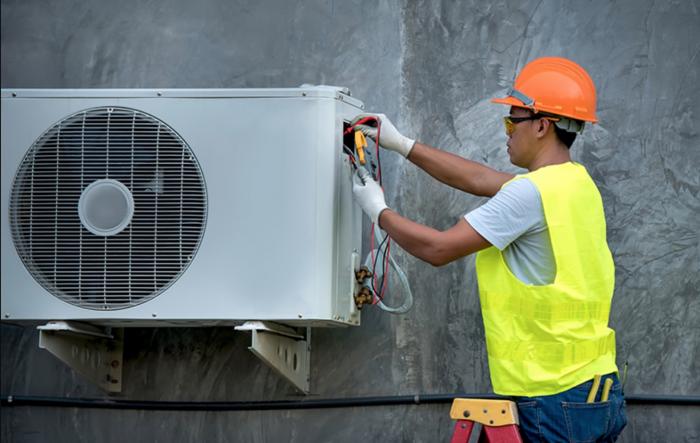
"Pipes break, HVAC equipment fails, service will have to be done during this crisis.” This is how Bob Krell of HealthyIndoors.com started his regular afternoon show on a Thursday in late April, just as the devastating impacts of the COVID-19 impact were beginning to become clear. Indeed, I had been wondering how long we might hope for good luck in terms of nothing breaking or needing critical service during this time of heightened health concern and social distancing. My family got our answer soon after when the thermocouple in our boiler failed. Now what? This small personal crisis also got me to thinking about all of the builders and contractors out there, who are providing emergency services and who are keeping projects going. What’s an essential service, industry, or project, and how are we going to keep everyone safe?
Fortunately, Bob Iacopucci agreed to rescue us first thing the next morning. But first we had a conversation we’d never had before about procedures and process, and I am confident this is just the beginning of thinking through new considerations regarding getting the urgent (for now) and less urgent service and work done that we’re all going to need eventually. This goes for our heat and hot water as well as for larger jobs and commercial projects. What is the new normal going to be?
Thirty minutes before Bob arrived, I opened the front door, basement door, and door to our mechanical area, as I didn’t want the team to have to touch anything they didn’t need to, and I also wanted to provide extra ventilation. I then wiped all the door handles just to be safe. Though Bob and his colleague arrived with masks, I did not follow them to the basement and we never got closer than across a room. After they left, I wiped the door handles again. Fortunately, Bob had the part and was able to solve the problem. We also have a less urgent issue we agreed to repair at a later date. Overall, I think we did ok for our first pandemic service call.
Situations like mine are playing out across the country. Everyone wants to get back to a productive work situation as soon as we can, and repairs and construction have largely been recognized as essential or at least allowed to continue with varying restrictions (see the State-by-State tracker below). But we need to work out which projects and services can continue and when, and how to do this work as safely as possible for everyone involved.
How to move forward with service and construction work generally in this changing environment is an emerging field but clearly requires a combination of trust, communication, and in the workplace, active leadership. Everyone involved also needs to understand that there are competing interests, and that this is a complex, almost impossible challenge to get right. And unfortunately right now, we have all of the questions and only some of the answers.
Before sharing any recommendations, I should be clear that OSHA, CDC, and other federal, and all local and state guidelines should always be followed. Nothing in this piece is intended to take the place of official guidance and regulations. I am also talking at a pretty 101 level, so if your work involves super complicated PPE or considerations I am not addressing, well please keep doing what you are doing! Err on the side of caution. That might be my best advice. According to CISA, the Cybersecurity and Infrastructure Security Agency, which is a part of the Department of Homeland Security, in a March 19 memo identifying essential pandemic workforce members:
“If you work in a critical infrastructure industry, as defined by the Department of Homeland Security, such as healthcare services and pharmaceutical and food supply, you have a special responsibility to maintain your normal work schedule.”
While construction was not specifically identified as a group in this memo, as Levelset.com reports, elements of construction work appear in almost every listed category, including commercial facilities, government facilities, healthcare, transportation, water systems, and waste.
According to OSHA,
"For most types of workers, the risk of infection with SARS-CoV-2 is similar to that of the general American public. Workers whose jobs do not require contact with people known to be, or suspected of being, infected with SARS-CoV-2, nor frequent close contact with (i.e., within 6 feet of) the general public are at lower risk of occupational exposure.”
The risk naturally increases to medium in areas of ongoing community spread, and is high when entering the home of a person suspected of having or known to have COVID-19.
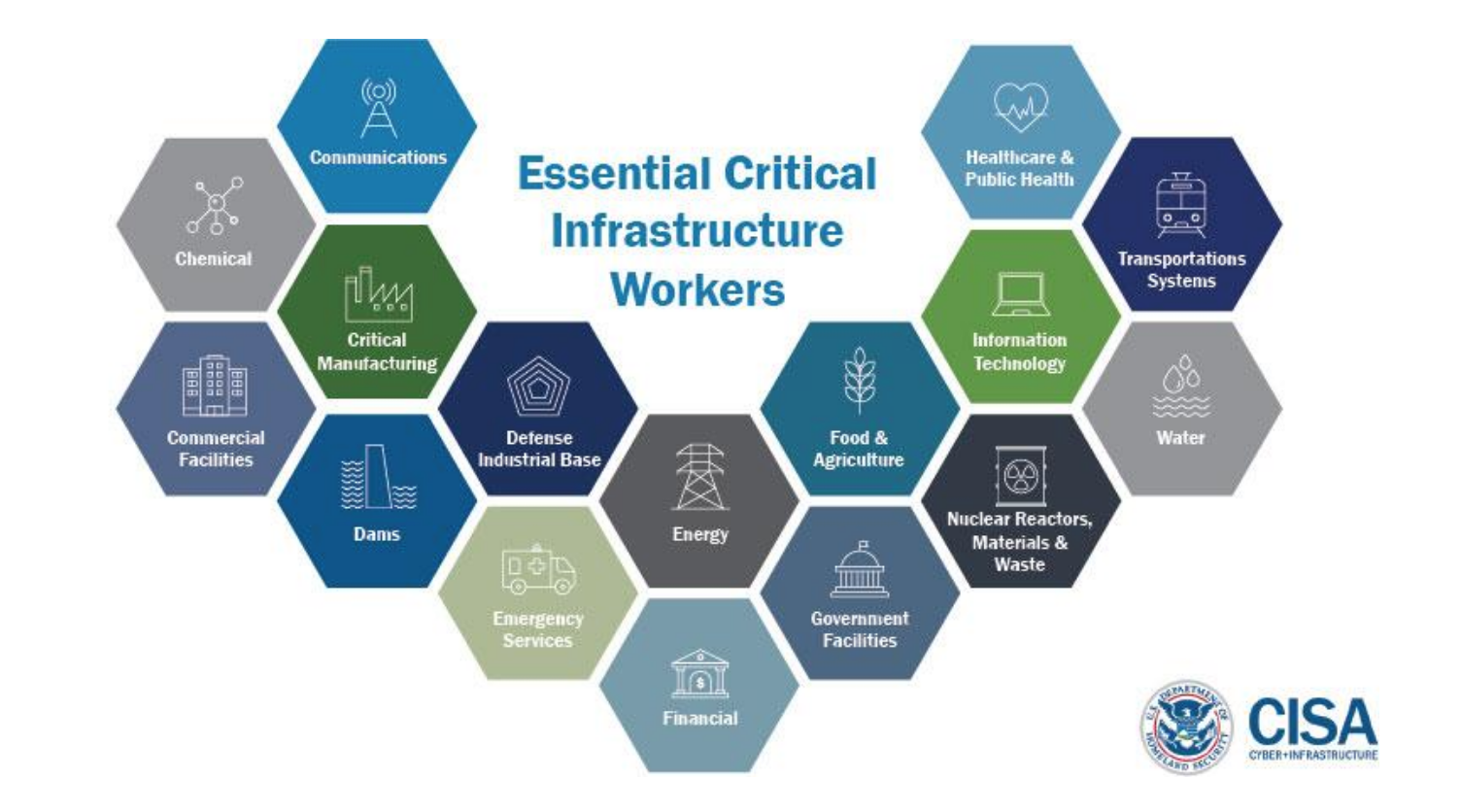
Image: Cybersecurity and Infrastructure Security Agency (CISA)
Clearly, most people want and need to keep working and earning if possible and don’t want to be sick, which means that safety concerns on the site must be addressed. But it’s important to think through what it means to delineate a “special responsibility” to work. Some workers may be immune compromised, or who may be living with a sick or compromised family member. Additionally, it is important to consider the situation of someone who may be the primary wage earner and can even less afford to be sick. As a part of the informal economy, many construction workers only get paid for their work daily even, and do not receive benefits or sick leave. As an additional question, what happens to the construction workforce who may be undocumented? As NPR reports, approximately 250 million construction workers were undocumented just in California in 2016. Keeping less essential work going, coming back to work too soon, or working in imperfect condition puts all of these workers at greater risk to themselves, and also to everyone else. So how do we then think through a special responsibility, unless there are also special considerations to who keeps working and how and if we can protect them? There is so much pressure to work, that it seems likely that some people will work when they don’t want to or don’t think it wise to, while others have clear incentives to work even if they feel sick.
According to Miami Herald reporting, “Some experts warn that no matter how many safety precautions are taken, construction sites remain a potential hot zone for COVID-19 spread. Indeed, local developer Sergio Pino shut down 8 Miami sites in early April after several workers and a relative at another local company tested positive. Pino sent a letter to Miami-Dade Major Carlos Gimenez and county commissioners asking them to consider a temporary stop to construction as more workers are falling ill. According to Pino, “Over half of the construction workers are not going to work because they are either feeling symptoms of the virus or because they are afraid to contract the disease.” NPR and others post the challenge for government and industry leaders to think through the difference between essential industries and essential projects. A partial solution for now may be to explore that question and reduce the amount of non-urgent or emergency work in progress. This step would address some health concerns, but not the economic challenges of course.
One challenge to determine what construction and related activities can continue has been the lack of federal guidance, which has resulted in a moving patchwork of different city and state rules, leading to confusion. While the overall industry push has been to continue, individual contractors and employees who spoke to Curbed shared their concerns in late March. According to one anonymous employee, “
“Being considered ‘essential employees’ is a little odd for a lot of us… There are projects that make sense to run, like ours, but I know guys that are working and they’re not feeling like they’re essential. Like retail: No one is shopping in brick-and-mortar stores... It doesn’t matter if retail construction is done right now. In office buildings, they’ve halted everything. Why would the office workers in those buildings be sent home because it wasn’t deemed safe, but construction workers told to come to work?”
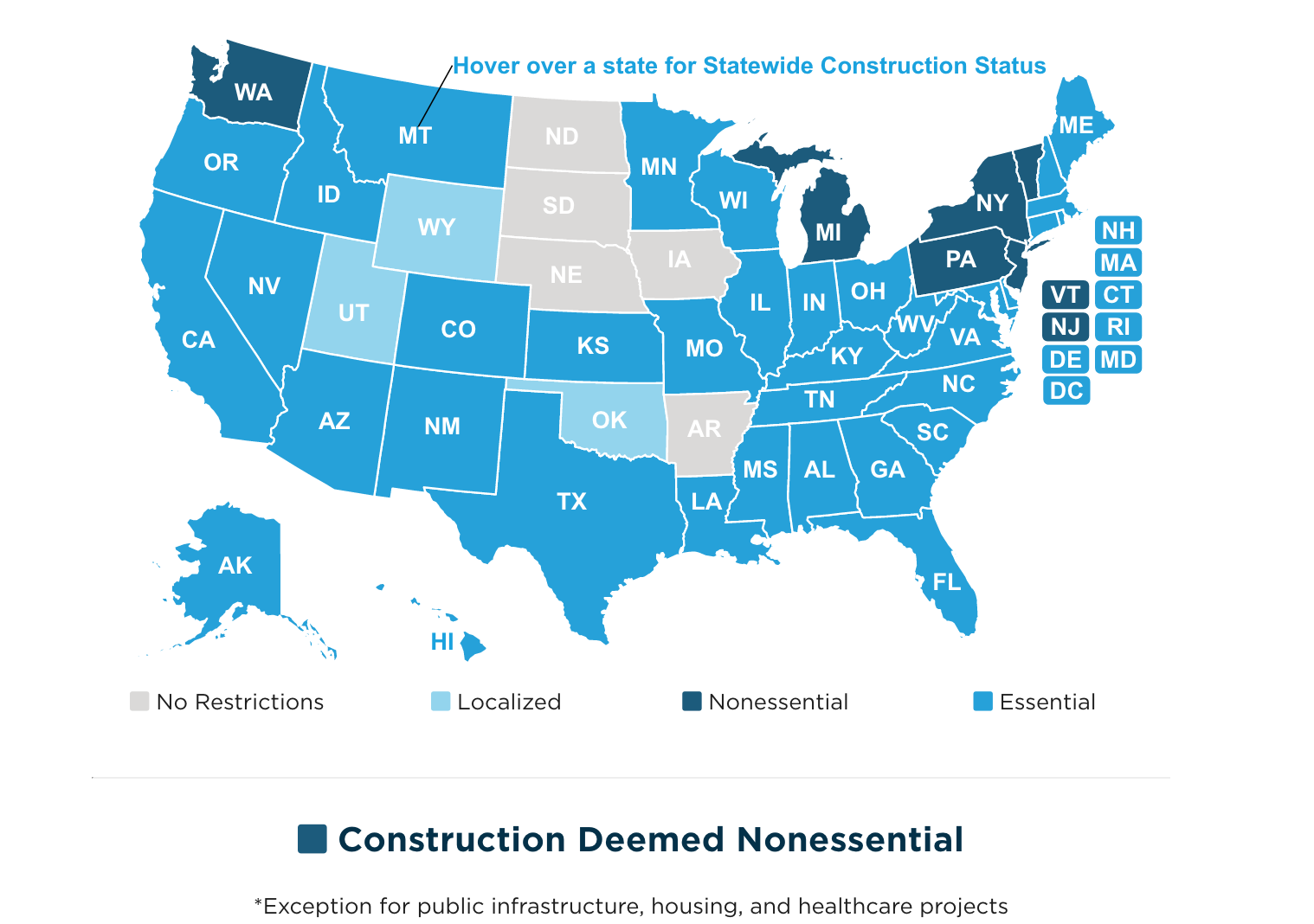
Image: https://www.constructconnect.com/covid-19-construction-activity-report
Most safety precautions are fairly intuitive, but implementation is another issue altogether. It’s often difficult to keep people working physically together 6 feet or more apart, and some of the work requires working together more closely to get the job done. Then there’s the issue of sharing tools or touching items or surfaces before they’ve been properly cleaned and disinfected.
Masks provide an example of how change can seem more simple in theory than in reality. Clearly, masks are becoming a more accepted part of conducting business during the pandemic, and they are also required in some cities, states, and for certain tasks or jobs. Indeed, many (hopefully most) contractors who might have once resisted wearing a mask, even as coronavirus started to spread, are now taking this requirement seriously. Clearly, masks increase safety generally and reduce the opportunity for the virus to spread. As an added incentive, projects once deemed essential or just allowable anyway, may be shut down in the event of increased illness. And yet, recent media reports show that some projects are simply not following the guidelines.
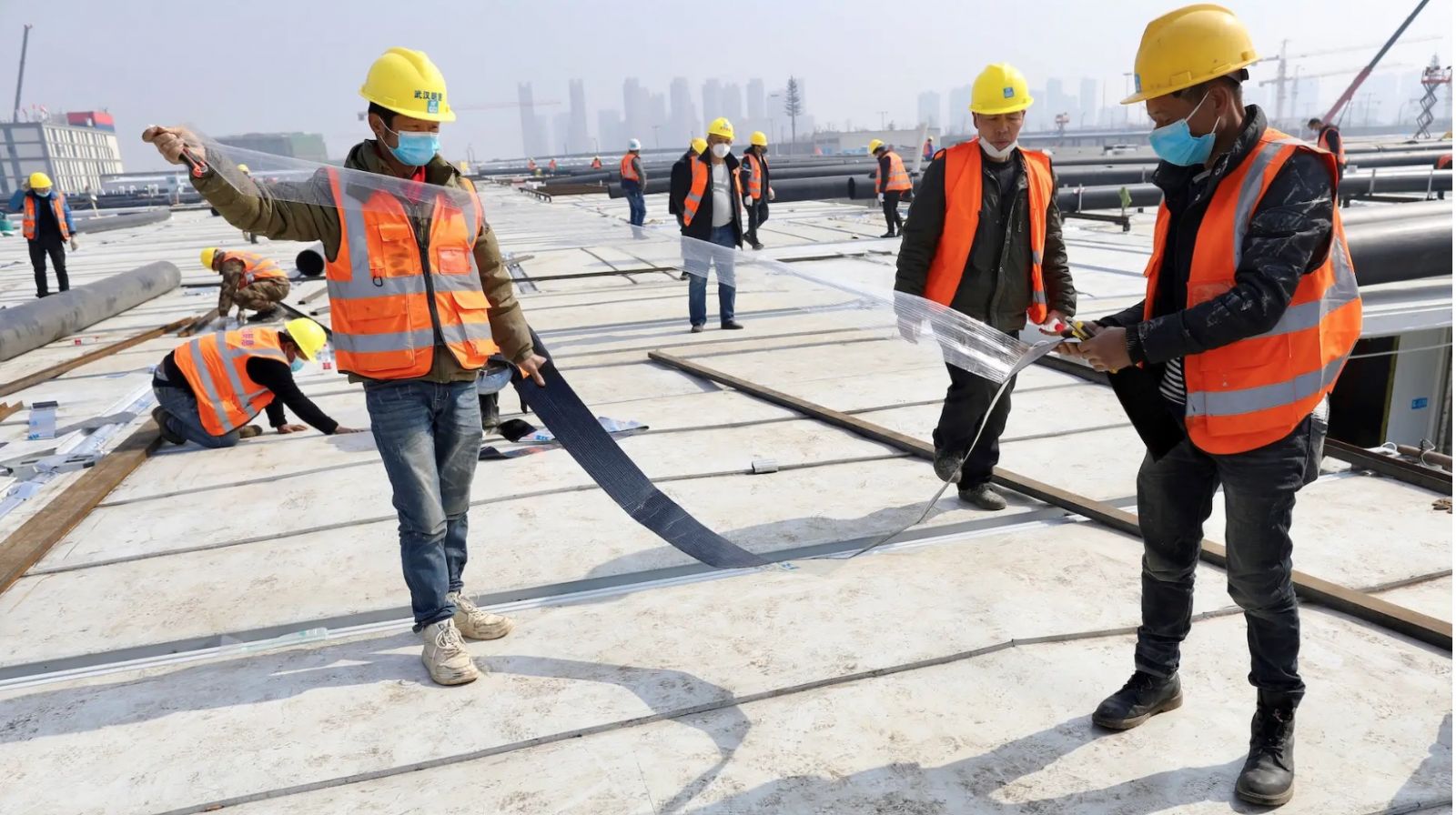
Image: BusinessInsider.com: Li He/Xinhua/Latin America News Agency
So, for ongoing and future work, how do we keep people working on job sites and protect both jobs and safety? We have to be able to accept a certain level of change, and we’re going to have to have some patience as we try to deal with the uncertainty. It seems like there’s been such an emphasis on blame lately, when it might help more if we could put ourselves in someone else’s position, and try to move forward in the safest and most fair ways possible. Part of the idea of taking on someone else’s perspective is a spirit of all getting through this together, and taking care of the wider community, even if sometimes we might not do something if it was just for ourselves.
Trust is going to be important to solving our largest problems as quickly as we reasonably can. It’s worth stating that trust only works with a foundation of honesty, and a commitment to doing what’s right. Service providers need to do this for clients, clients need to do this for service providers, and all employees need to look out for their employees right now. It’s smart business, but hey it’s also the right thing to do. If we have to tell the truth, pre-pandemic most of us have worked sick when we shouldn’t have. We wanted to get something done, or maybe we felt like it would look bad to take a sick day, or pretty likely, we simply needed to earn that pay. Now, as just one example of an increased need for trust, we need to ask both workers and homeowners to report if they are ill, and this means we also need to prepare for more last minute cancelations as a result. It’s not a question of “toughing it out” but the risk one can pose to others. From the other perspective, employees have to trust that employers will believe them when they call in sick and that they can do so without fear of retaliation or judgment. Likewise, homeowners may need some room on cancelation fees and falling off the schedule if they cancel.
This new normal will require more communication - to the point where at first it will seem like overcommunication. Plan ahead with clients about what can be done without contact along with when and how. Identify if something less urgent can wait if it can not be accomplished more safely right now. These are the considerations and conversations we need to be having, as there are clearly tough decisions and tensions between doing permitted and even more urgent work, and putting off everything a company can possibly justify putting off.
An uneasy gray area where each company decides for itself seems a bit unwise, unfair, and unsafe. How many of us would choose less income, especially when there is so much uncertainty? Putting it plainly, most companies allowed to keep working will likely do so. Let clients know what to expect and what you need, and also listen to their concerns. Communication with employees goes without saying. First of all, everyone is anxious about work right now. Let employees know what to expect and what you know and don’t know. Train them well on all new equipment and procedures, and provide documentation for what is expected. Listen to employees as well. What do they need, what are they worried about and what do they need to be successful for themselves and for your organization?
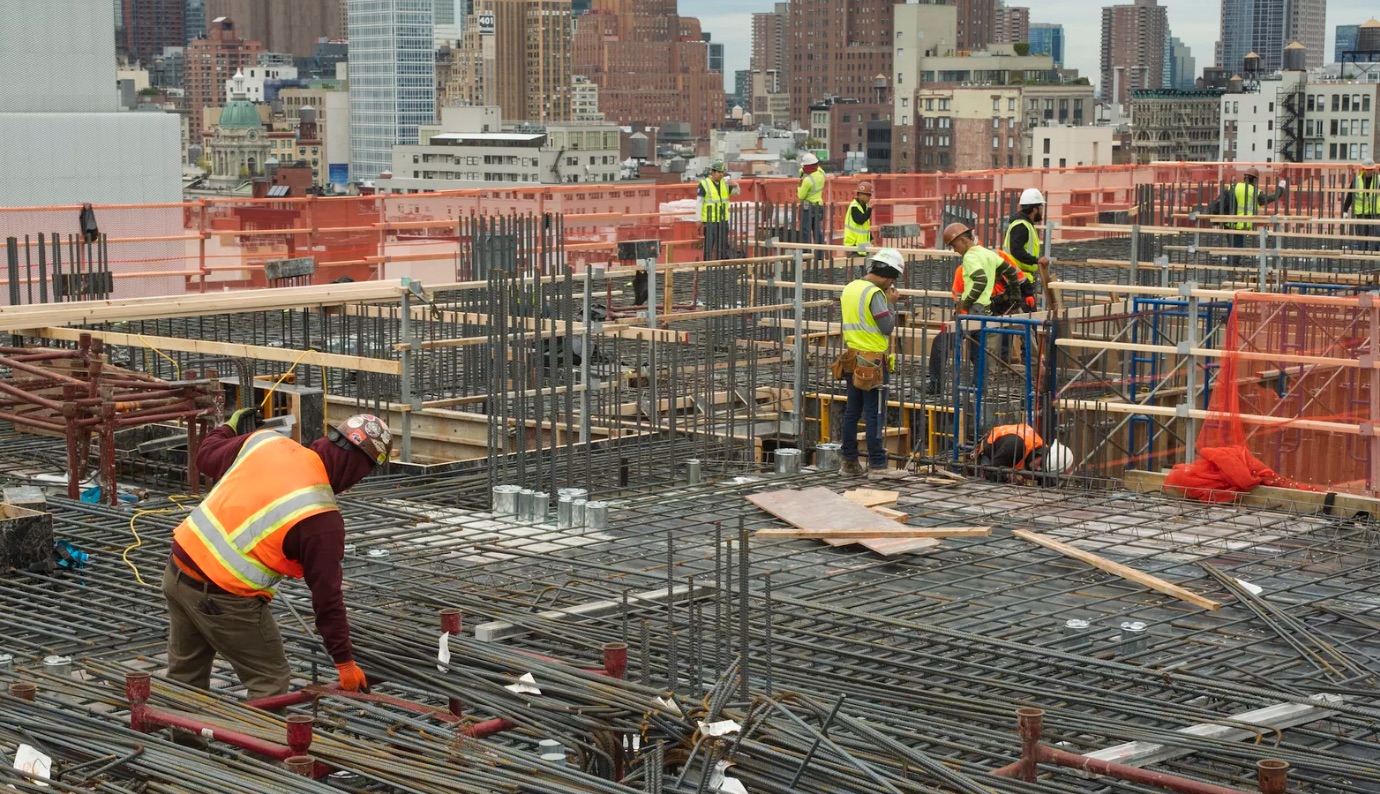
Image: Universal Images Group via Getty, via Curbed.com
This is just a time to take those extra steps to be better, particularly as we are all in this together. As always, you, as the employer, are represented by your employees, and each company’s brand and reputation is only as good as the person on the ground level doing the work and interacting with clients. Therefore you have a clear incentive to make sure that person feels as confident and prepared to succeed as possible.
While it may seem general, the best response and a definition of leadership under the circumstances is all of us sharing what we know in full, and also listening to others - and then doing our best in response to what we keep learning and as the information available evolves. While listening to an excellent webinar by International Well Being Institute (IWBI) on April 9th (see links below), some people and companies are going to rise to this occasion, while some are going to fail this leadership test (and already have). Steady your ship, steady yourself, and do not think for the short term only. Those who think for the long term have a better opportunity to thrive. Understand also that you are not alone, so do try to talk to others and share advice and experiences back and forth. We don’t exactly know what this evolving workplace will look like - but we are going to need to figure this out together. And we’re going to need a new set of tools - or to better use our current ones.
Leadership and trust go hand in hand, and they really permeate even the practical parts of a discussion on how to keep clients and employees safe on the job site. We can’t ask everyone to be better if we aren’t willing to do the most we can ourselves. With this in mind, below are some suggestions on communication, procedures, and equipment that may prove helpful as we work though how to keep service employees and builders safer on the job site. Feedback and edits are always welcome.
Communication
There is no such thing as too much communication.
-
Check in with staff constantly
-
The CDC recommends appointing a coordinator for COVID-19 issues and their workplace impact.
-
Ask your employees how they are feeling - they may not volunteer to tell you if they are trying to tough it out or avoid missing work.
-
Sick employees clearly must stay home
-
But also, watch for burnout or stress. Work with staff, and understand that this is a leadership opportunity - your people are your biggest asset. As you think about keeping your business going, think also about keeping the people going. Concerns are going to be heightened now about pay, leave, safety, and of course, their health. Workers who are more informed and confident are more likely to show up, and do a great job. Ask what conversations are on people’s minds that you may be able to help with. You don’t know until you ask or unless you are listening.
-
Determine if your team members have an underlying medical condition. But note that it is critical (and the law) to keep this information confidential.
-
-
Training/reminding: Does your team know the rules of the road?
-
Train on PPE and on procedures and communications
-
Continuously repeat key policies at meetings and in regular communications
-
Share a written copy of policies and procedures
-
-
Enforcement: It’s not enough to tell people what they need to do. Employers also need to check and correct. There should be a greater willingness to follow safety procedures in this time of crisis, but it is not automatic or universal. Employers and managers must lead by example. Contractors should see the additional CDC guidelines just as they would OSHA guidelines. As one panelist put it recently, “Obey or don’t work on our job.”
-
Debrief employees after a visit or work day. What went well, what could have gone better? Are clients following the procedures? If not, you may need to take action.
-
-
Client Communications
-
Call and plan in advance of every visit
-
Establish if this work is urgent. It is an OSHA recommendation to postpone elective work, though this is of course part of a larger and also practical conversation of what work can and should proceed.
-
Gather as much information in advance that may help make the service more efficient - for example, trying to identify the problem and any parts, etc.
-
- Call before going to the job site that day, and ask the right questions
-
Is there someone who has a special consideration or need?
-
Has anyone traveled to an area of increased risk in the last 14 days?
-
Has anyone in the home or building recently been exposed to someone who is suspected of having or who is known to have or to have been exposed to COVID-19?
-
Is anyone in the home or building sick? (This doesn’t necessarily mean a cancelation for urgent work, but it may mean that a vendor should take extra precautions)
-
Is this a good day and time to come? What do you need to know to work safely
-
Ask the clients to maintain a safe distance of 6 feet or more, and the further, the better. Empty work spaces are a plus, but they of course do not resolve the challenge of multiple people working who likely come from different households
-
Request that shared spaces in the home have good airflow, such as by turning on an air conditioner or opening windows, weather permitting, consistent with CDC recommended precautions for people in households (OSHA)
-
Arrange for electronic payment if possible
-
-
Policies:
All policies and procedures should be communicated in writing, as stated above. The following are all CDC recommendations. It is worth reviewing all related OSHA and CDC guidance.
-
-
If you do not already have one in place, you need to develop an Infectious Disease Preparedness and Response Plan
-
-
-
Be aware of guidance from federal, state, local, tribal, and/or territorial health agencies, and think through how you are going to incorporate recommendations and resources into workplace-specific plans
-
Implement flexible sick leave and supportive policies and practices
-
Ensure that sick leave policies are flexible and consistent with public health guidance and that employees are aware of and understand these policies
-
Maintain flexible policies that permit employees to stay home to care for a sick family member or take care of children due to school and childcare closures. Additional flexibilities might include giving advances on future sick leave and allowing employees to donate sick leave to each other
-
Employers that do not currently offer sick leave to some or all of their employees may want to draft non-punitive “emergency sick leave” policies
-
Employers should not require a positive COVID-19 test result or a healthcare provider’s note for employees who are sick to validate their illness, qualify for sick leave, or to return to work. Healthcare provider offices and medical facilities may be extremely busy and not able to provide such documentation in a timely manner
-
Review human resources policies to make sure that policies and practices are consistent with public health recommendations and are consistent with existing state and federal workplace laws (for more information on employer responsibilities, visit the Department of Labor’s and the Equal Employment Opportunity Commission’s websites.
-
Connect employees to employee assistance program (EAP) resources (if available) and community resources as needed. Employees may need additional social, behavioral, and other services, for example, to cope with the death of a loved one.
-
The clearest policy is possibly also the most difficult to follow for many service workers:
-
Stay home if ill! Also, employees need to stay home if exposed to someone who is ill or who has reason to believe they may have been exposed to an illness and may therefore be contagious. There’s a need to trust employees to report illnesses properly, but also bears repeating that employers must look out for everyone by creating a safe environment and policies supportive of this reporting.
Safe Work Practices:
-
Taking employee temperatures is becoming more common and is a good idea to prevent some people from working who may not know they are ill (or who may choose to work regardless), but note that this will not catch asymptomatic illnesses
-
Keep people apart on site as much as possible - minimize contact
-
If possible, avoid multiple passengers in a vehicle
-
*If not, have safer ways to travel together been determined? This is a great topic that came up during the HealthyIndoors webinar on 4/2 as well. How do we keep the “guys in the truck” safe?
-
-
Keep distance from clients - at least 6 feet, but the more, the better. Consider the following:
-
Do they need to be near?
-
Do they need to be home?
-
Have clients pre-open doors to the work area in advance if possible
-
Have all meetings electronically that do not have to be in person
-
Discourage site visits/visitors (not currently allowed on many sites)
-
-
Maximize employee distance apart.
-
At least 6 feet of distance is required, but the more, the better
-
Consider the following:
-
Limit the # of total people
-
Limit the # of trades on site
-
Limit the # of people on a floor or in specific rooms/spaces
-
Limit multi-person activities when possible
-
Stack shifts and adjust work times if possible
-
-
-
All necessary meetings should be held outside and should observe social distancing
-
-
Do not shake hands or have direct physical contact with clients - and with other workers on site, to the extent possible. Wash hands after direct contact, or wear gloves as is appropriate to avoid contact. (I recognize that gloves can complicate some work -there’s a balance on this topic we can’t resolve here.)
-
Avoid touching faces as much as possible, and encourage washing or sanitizing when someone touched their face (masks can help discourage this))
-
Follow safe coughing and sneezing etiquette (do not cough and sneeze into hands)
-
Proper and adequate hygiene supplies must be made available
-
Hand washing stations and supplies (or alcohol wipes) must be available, and employees must wash their hands for at least 20 seconds
-
Hand sanitizer. Some companies are even making their own sanitizer.
-
Tissues
-
No-touch trash cans
-
Alcohol wipes containing at least 60 percent alcohol
-
Disinfectants
-
Disposable towels for cleaning work surfaces
-
Proper hand washing signage must be posted
-
Keep additional cleaning supplies in vehicles
-
-
Avoid sharing equipment and tools to the extent possible
-
Employees should bring food and beverages from home when possible
-
Establish (and post and share) proper clean up and decontamination procedures. These should include the following (in addition to other procedures):
-
Wipe down everything that employees touch
-
Examples include doorknobs, rails, surfaces
-
Don’t forget tools and steering wheels when in a vehicle
-
-
Clean before any disinfecting
-
Use the appropriate chemical for the appropriate job, and follow all instructions for correct use. A list of products approved for use against the virus is available through the EPA, though note these are not endorsements.
-
-
Clean and disinfect all restroom facilities regularly
-
Clean and disinfect all common and shared spaces regularly
-
Ventilate to lower risk and also disperse contaminants. There are recommendations to upgrade engineering controls, and to install high-efficiency air filters and increase ventilation rates. These vary in practicality by the work environment. Increasing the percentage of outdoor air is also recommended, and at the simplest level once can always start by opening a window in many environments, if there is no allergy or humidity concern.
-
Reduce dust levels by using engineering and work practice controls, such as water delivery and dust collection systems
-
Consider installing or leveraging physical barriers. These can be as simple as a plastic liner, or as complex as a wall, and these also vary in terms of practicality by work environment
Proper PPE & Equipment
PPE should be appropriate to the task (Please note that I am not addressing advanced PPE specifically here. If an item is missing, we can add or edit, but this list is meant to add considerations and not lessen any protective measures or equipment)
-
Employees on the job site should wear masks, except when the mask inhibits a required task or adds a sight-related safety concern in some way. Clearly there is a challenge, as everyone does not currently have access to a quality mask (and generally not medical grade at this time, due to the need among health care workers) to protect workers from dust, particulates and toxic matter on the job site. Bandanas do not provide sufficient protection, and it is my suggestion, even when not required, that employers should provide masks. What signal does it send if mid pandemic you can’t invest in this simple protective piece of equipment? This is a leadership sign, to not ask someone to “figure it out for themselves” on an essential piece of equipment. After all, when someone falls ill, it certainly costs the company more than the mask. I almost felt silly making this point, but then I have heard that some people are required to find their own masks, and also that some sites aren’t following this rule even when it’s a local ordinance. So it bears this much attention.
-
Obviously, more advanced equipment such as respirators and gowns might be needed for more hazardous work but this isn’t really the purview of this article. We’re discussing what might be needed on projects and for service that in the past didn’t require special health considerations.
-
See the above list regarding proper hygiene supplies that should be available
-
-
The proper PPE must be provided appropriate to the hazard to the worker, and must be worn when and as required
-
Wear gloves appropriate for each task, and dispose of gloves frequently and properly - one of the few times where you shouldn’t feel the need to “reduce, reuse, recycle.”
-
Wear safety glasses, goggles or face shields appropriate for each task
-
Booties - can not walk into homes and other buildings with shoes on
-
-
PPE must be fitted and refitted properly as appropriate (respirators, for example, when appropriate)
-
PPE should be properly maintained
-
PPE must also be properly stored and disposed of
Above all, social distancing is paramount. As Bryan Orr of HVACR School said during a HealthyIndoors Webinar on April 2nd, "Remember – the greatest risk of infection is when you are in proximity to other people, not in the equipment itself.” We must all work to keep people at a maximum distance, at the office and on the job site.
One interesting question that comes up: Are people more careful in the field, and especially when they are used to thinking about greater risks and safety efforts? Even if workers are not sharing tools and are wiping down what they touch and are wearing all the right PPE, what happens at the end of the day when multiple people get back into the truck, or back at the office where people may be less sensitive to risk? This is what we have to keep asking. What can we do, and what level of risk are employees companies, and society at large comfortable with?
Additional Considerations for the Office:
-
As with all companies at this time, construction and contracting firms need to ask, “Who needs to be in the office?” Anyone who can work productively from home should work from home.
-
Social distance of 6 or more feet must be maintained in the office as well
-
Avoid all face to face meetings as is possible, and use technology to conference instead
-
Review and revise cleaning and sanitizing procedures, including frequency of cleaning. Disinfect shared surfaces (door handles, machinery controls, etc.) on a regular basis.
-
Communication is important at the office as well
-
Temperature checks can help, but again they do not catch asymptomatic illnesses
-
Training, reminding, and enforcing is just as important at the office
-
-
Proper hygiene supplies and signage are required
-
Avoid using other employees’ phones, desks, offices, or other equipment. If necessary, clean and disinfect them before and after use.
-
Increased ventilation, increased outside air, and improved filtering should be considered if possible
The risks on job sites are currently clearly higher in this environment, and the consequences are frightening. Every employer has the obligation to do all he or she reasonably can (and more) to protect workers, and all workers have the obligation to protect each other, in terms of health, and keeping a project going safely and productively.
These considerations include, as OSHA has recommended, considering what work should proceed and what work can be postponed. I admit this is a tough ask when companies and people want and need to keep working. This is a changing world for all of us, and it may not be easy to adapt. But there isn’t another option. Mistakes or carelessness can lead to ill coworkers, shut down projects, and then entire industries - which leads to still further consequences. The only way to proceed is with the utmost caution, and to follow all of the guidelines, even as they evolve. Those who don’t take extra care are further increasing the risk for themselves and everyone else as well.
This topic is too complex to be adequately covered in the scope of a single article.For more information, I have found the following resources helpful:
Health Indoors.com Show, 4/2:
COVID-19 Safety Precautions for Contractors:
Procedures and Personal Protection for Performing Services During the Crisis
https://healthyindoors.com/healthy-indoors-show/
Healthy Indoors.com
HVAC Contractors Guide to COVID-19 (SARS-COV-2, Coronavirus)
Shared by Bryan Orr, HVACR School
https://healthyindoors.com/2020/04/hvac-contractors-guide-to-covid-19-sars-cov-2-coronavirus/
International Well Building Institute (IWBI) Webinar, April 9
Fostering Resilience
Strategies to Help your Organization
https://resources.wellcertified.com/webcasts/places-matter-to-foster-resilience/
National Association of Home Builders Covid Preparedness Information:
https://www.nahb.org/Advocacy/Industry-Issues/Emergency-Preparedness-and-Response/Coronavirus-Preparedness/Protect-Your-Business/Construction-Jobsite-Safety-Recommendations
Energy & Environmental Building Alliance (EEBA) Webinar, 4/8
Marketing to a Changed Market:
https://www.eeba.org/
https://www.curbed.com/2020/3/30/21199753/coronavirus-covid-19-construction-industry
https://www.constructconnect.com/blog/should-all-construction-be-essential-during-the-coronavirus-pandemic
https://www.builderonline.com/building/safety-healthfulness/builders-covid-19-dilemma-construction-continuity-versus-the-health-risks-on-job-sites_o
OSHA Control and Prevention information regarding COVID-19
https://www.osha.gov/SLTC/covid-19/controlprevention.html#repair_services
CDC - Interim Guidance for Business and Employers to Plan and respond to Coronavirus Disease
https://www.cdc.gov/coronavirus/2019-ncov/community/guidance-business-response.html
Coronavirus Construction Limits: State-by-State Tracking
https://www.constructconnect.com/covid-19-construction-activity-report
https://www.jlconline.com/coronavirus-construction-limits-state-by-state-tracker
Thumbnail/First Image:
Purposely selected from HVACInformed.com. I am sure this was taken pre-pandemic, but I hope some people stop and say wait, where's this person's mask? Because now, we need to be thinking about when PPE is needed and require or not.
https://www.hvacinformed.com/insights/hvac-designated-essential-workers-covid-19-co-1571129776-ga-co-1571469098-ga-co-1573563455-ga-co-1573563728-ga.1585237366.html
- Filed Under: Health and Air Quality
- ( 9710 ) views

I am excited to work with the Members of the Rate It Green Community to host conversations, create connections, and generally share information and help green builders everywhere. Please feel welcome to reach out to me directly with suggestions for improving Rate It Green.
- ( 0 ) Ratings
- ( 104 ) Discussions
- ( 131 ) Group Posts
Reply/Leave a Comment (You must be logged in to leave a comment)
Connect with us!
Subscribe to our monthly newsletter:
 Greenbuild Report Out, 2025 Nov 12, 2025
Greenbuild Report Out, 2025 Nov 12, 2025









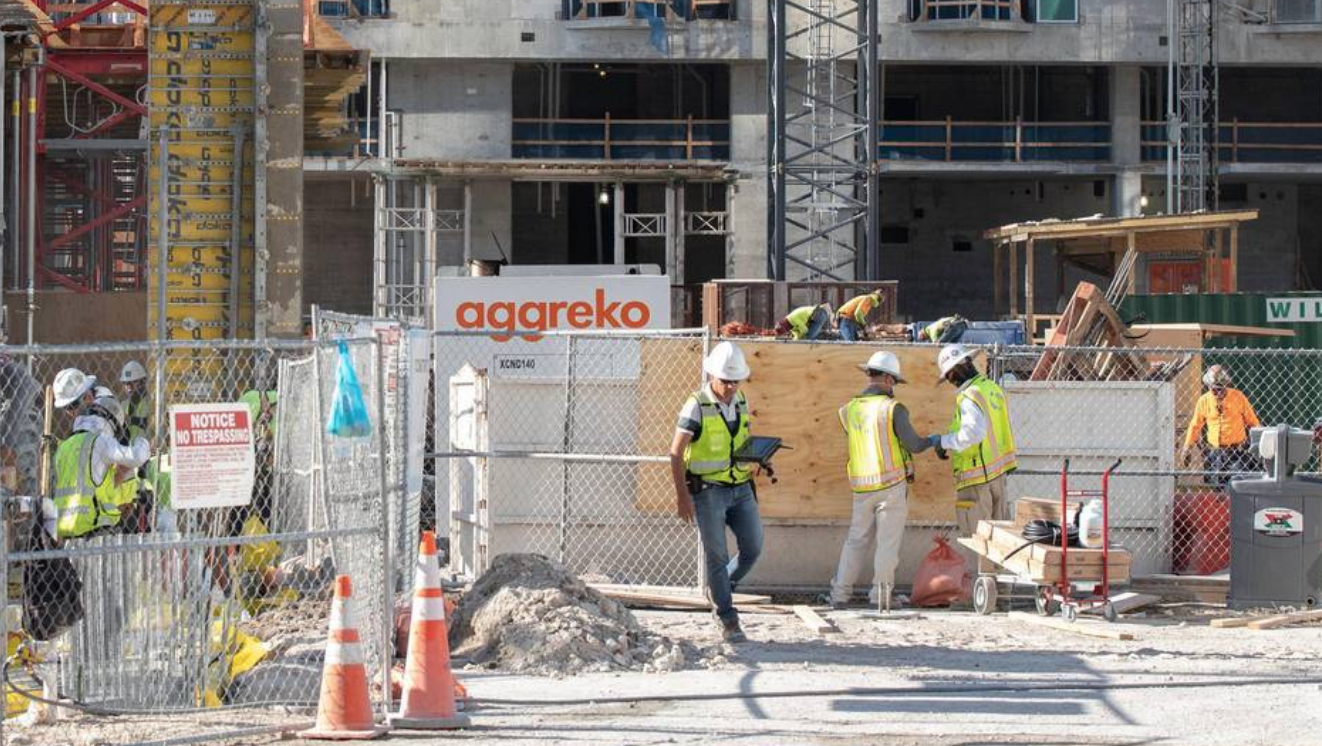


















Not a Member Yet? Register and Join the Community | Log in